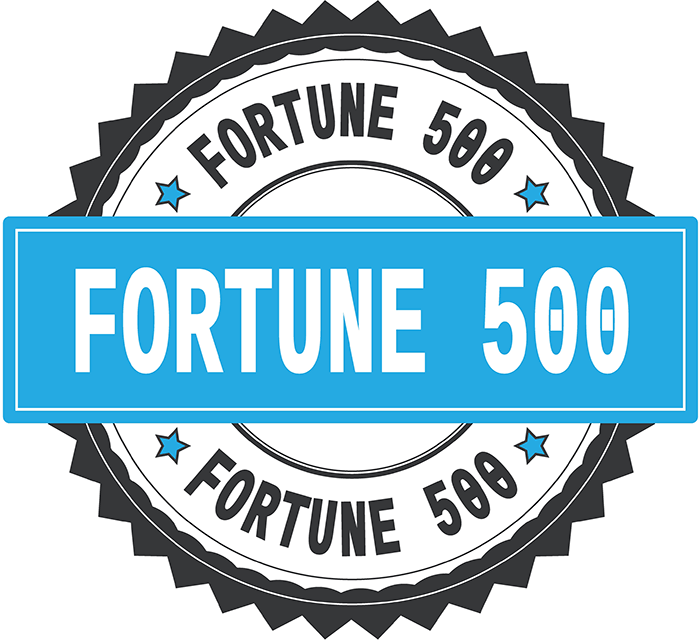March 26th, 2019 - Franchises Under 10k

Fortune magazine was founded in 1929, and published its first issue in 1930. The magazine’s mission includes the laudable goal that “the reading of it [Fortune magazine] may be one of the keenest pleasures in the life of every subscriber.” (source)
Setting aside the self-congratulatory -- or perhaps just dated -- tone of its rhetoric, it’s undeniable that Fortune’s stories have made an impact. The style of ranked lists that it popularized, such as the “Fortune 500” (the list of the 500 largest companies in the US) has become a staple of internet journalism.
In the spirit of Fortune Magazine, then, what follows is a ranked list of our own. Given that Fortune magazine has published tens of thousands of articles, what are the 10 most important Fortune articles ever published?
We start with a quick history of Fortune, then a word about our methodology, and finally, we present our rankings.
A Brief History of Fortune Magazine
Fortune magazine debuted its first issue in 1930, four short months after the stock market crash of 1929. One historian described its style as “bright” and “lavish”, in contrast to other business publications of the time that were “boring and unmarketable”.
Fortune was founded by Henry Luce, co-founder of Time Inc (which also owned Time magazine). Time Inc has a storied history, which includes the 1990 merger with Warner Communications to form Time Warner, and the 2018 acquisition of the company by AT&T. Time Inc (including Fortune magazine), was spun off and eventually acquired by the Meredith Corporation in 2018. On November 9, 2018, Meredith Corporation announced it was selling Fortune to Thai business mogul Chatchaval Jiaravanon for $150 million.
While the paper version of the magazine was dominant for the first 70+ years of the publication’s life, the internet version now reaches the widest circulation. From 2004 to 2014, Fortune magazine’s web presence was hosted on CNN.com, and only in 2014 after Time In was spun off into a standalone company from Time Warner did Fortune magazine begin to host its own website.

Methodology
Each time a website links to one of Fortune magazine’s annually recurring articles we treat that link as a vote. The article with the most votes is ranked in 1st place, and the remaining 9 articles are then sorted in descending order based on votes.
The 10 Most Important Articles from Fortune Magazine
Rank |
Article Name |
Votes |
| #1 | Fortune 500 | 2,786 |
| #2 | 100 Best Companies to Work For | 1,750 |
| #3 | World’s Most Admired Companies | 1,378 |
| #4 | Global 500 | 1,249 |
| #5 | World’s Greatest Leaders | 858 |
| #6 | Unicorns | 777 |
| #7 | 40 Under 40 | 672 |
| #8 | Most Powerful Women | 582 |
| #9 | 100 Fastest Growing Companies | 325 |
| #10 | 100 Best Workplaces to Work for Women | 223 |
Details on Each Article
1. The Fortune 500
The Fortune 500 was first published in 1955 and is an annually updated list of the 500 largest public and private companies in the United States. The list is ranked based on the total revenue of each company.
You can see the impact of the Fortune 500 by a simple review of titles published after the rankings are announced each year: Companies that join the ranks each year trumpet the news. Newspapers announce that “These 10 Colorado Companies Landed on the 2018 Fortune 500”. Niche websites relate to their topics to the Fortune 500, such as: “ManageEngine vuln[erabilitie]s impact majority of Fortune 500 companies”.
2. 100 Best Companies to Work For
This is a list of the 100 companies that have the best employee environment. Fortune partners with Great Place to Work to create the rating, which is based both on an annual workforce survey (which accounts for 85% of the rating), and a review of the companies’ HR policies (which accounts for the remaining 15%). The companies that make this list represent a diverse array of industries including business, finance, retail, and technology. Any company with at least 1,000 employees in the US that applies to be considered for the award can be named to the list. In 2019, the top honor was awarded to Hilton.
3. World’s Most Admired Companies
Originally launched in 1997, this ranks the most respected large businesses in the world. The process starts with the list of Fortune 1000 and Global 500 businesses. Companies must have at least USD $10 billion in annual revenue and rank among the largest businesses in their industry. Up to 17 executives and outside board members from each of the competing companies (along with industry analysts) are then asked to rate the companies within their industries on a series of questions, such as the company’s ability to attract and retain talent, the quality of their management, etc. Companies that rank in the top half of their industry are awarded the “most admired company” moniker.
Popular names on the list include Apple, Amazon, Walt Disney, Microsoft, and Starbucks.
4. Global 500
This list features the world’s 500 largest companies. A company that is based in the United States can be on both the Fortune 500 list and the Global 500 list. Private companies can be included on the list, as long as they publish their financial data and report at least some of their data to a government agency.
Many of the companies on the list include private and public ventures such as Wal-Mart, Sinopec, Shell, Berkshire Hathaway and more.
5. World’s Greatest Leaders
Now in its fifth edition, this Fortune list comprises the most inspiring global figures who are leading the world in business, arts, government, and philanthropy. Unlike most of Fortune’s lists, they don’t publish a methodology for how they choose their “Greatest Leaders”. The Washington Post wrote: “Fortune solicits nominations from experts, but the list is largely shaped by editors with a thematic eye”.
6. Unicorns
In tech / entrepreneurial parlance, a “unicorn” is a start-up that is valued at $1 billion or more. These are often exciting and newsworthy companies, which may be why many websites “voted” for this list despite the fact that it was only published twice, once in 2015 and once in 2016. The rankings themselves are based on valuations, and if two or more companies tie, the company whose name is closer to the beginning of the alphabet is ranked higher. Uber, Xiaomi, and Airbnb took the top 3 spots in 2016.
7. 40 Under 40
This list includes 40 individuals under the age of 40 that the magazine believes to be the most influential in the year of publication. From 1993 - 2003, Fortune ran a version of this list where the rankings were based purely on wealth. Subsequent versions have used a more sophisticated (and more subjective) ranking system. Essentially a team of Fortune editors and writers pick a theme or industry on which to focus. They then interview their contacts within that area, and as a group they come up with a list of winners.
8. Most Powerful Women
Fortune’s Most Powerful Women lists the most influential business women in the United States. (There is also an international version of the list). Fortune editors base their selections on four criteria:
- The size / importance of the woman’s business in the global economy
- The health and direction of that business
- The arc of the woman’s career
- The woman’s social and cultural influence
(source)
9. 100 Fastest Growing Companies
This list comprises the top 100 fastest growing companies in the world. Candidate companies must trade their stock in a major US stock exchange, have a minimum market cap of USD $250 million, and meet a host of smaller criteria. It ranks companies based on their three-year performance in revenues, profits, and stock returns.
10. 100 Best Workplaces to Work for Women
This article lists 100 companies that offer the best working environment for women in the United States. Fortune publishes the list in collaboration with its research partner Great Place to Work. Much like Fortune’s 100 Best Workplaces, the Best Workplaces for Women bases 85% of its decision on workplace surveys, and the remaining 15% is based on how women are represented in the workforce and management.
